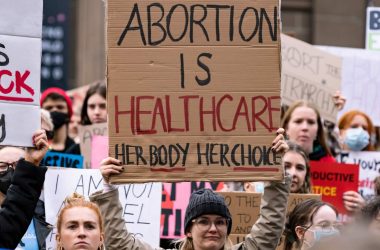Washington, DC—(ENEWSPF)—June 9, 2015. The Affordable Care Act has already covered one in four uninsured Americans – more than ten million – and improved coverage for virtually everyone with health coverage. Insurers can no longer discriminate against preexisting conditions, charge women more just for being women, or put caps on the care you receive. Hospitals, doctors and other providers are changing the way they operate to deliver better care at lower cost. In the years to come, the ability to buy portable and affordable plans on a competitive marketplace will allow countless Americans to move, start businesses, and dream big American dreams — without worrying if an illness will bankrupt them. Here is how the Affordable Care Act is working for families in every state around the country:
After Health Reform: Improved Access to Care
Gallup recently estimated that the uninsured rate in the first quarter of 2015 was
11.9 percent, down from 17.1 percent in 2013.
Prohibits coverage denials and reduced benefits, protecting as many as 129 million Americans who have some type of pre-existing health condition, including up to 17 million children.
Eliminates lifetime and annual limits on insurance coverage and establishes annual limits on out-of-pocket spending on essential health benefits, benefiting 105 million Americans, including 39.5 million women and nearly 28 million children.
Expands Medicaid to all non-eligible adults with incomes under 133% of the federal poverty level. If all states expand Medicaid, an additional 4.3 million uninsured people would gain coverage.
Establishes a system of state and federal health insurance exchanges, or marketplaces, to make it easier or individuals and small-business employees to purchase health plans at affordable prices through which 10.2 million Americans were covered in March 2015.
Created a temporary high-risk pool program to cover uninsured people with pre-existing conditions prior to 2014 reforms which helped more than 130,000 people.
Creates health plan disclosure requirements and simple, standardized summaries so 170 million Americans can better understand coverage information and compare benefits.
After Health Reform: More Affordable Care
Eliminates out-of-pocket costs for preventive services like immunizations, certain cancer screenings, contraception, reproductive counseling, obesity screening, and behavioral assessments for children. This coverage is guaranteed for more than 137 million Americans including 55 million women.
Eliminates out-of-pocket costs for 39 million Medicare beneficiaries for preventive services like cancer screenings, bone-mass measurements, annual physicals, and smoking cessation.
Phases out the “donut hole” coverage gap for 9.4 million Medicare prescription drug beneficiaries, who have saved an average of $1,598 per beneficiary.
Creates Accountable Care Organizations consisting of doctors and other health-care providers who share in savings from keeping patients well while improving quality, helping 7.8 million Medicare beneficiaries.
Phases out overpayments through the Medicare Advantage system, while requiring Medicare Advantage plans to spend at least 85 percent of Medicare revenue on patient care. Medicare Advantage enrollment has grown by 6 million to over 16 million since 2009.
After Health Reform: Improved Quality and Accountability to You
Provides incentives to hospitals in Medicare to reduce hospital-acquired infections and avoidable readmissions. Creates a collaborative health-safety learning network, the Partnership for Patients, that includes over 3,700 hospitals to promote best quality practices.
We’re not done. Other legislation and executive actions are continuing to advance the cause of effective, accountable and affordable health care. This includes:
Incentive payments for doctors, hospitals, and other providers to adopt and use certified electronic health records (EHR). More than 59 percent of hospitals and 48 percent of providers have electronic health records systems.
A new funding pool for Community Health Centers to build, expand and operate health-care facilities in underserved communities. Health Center grantees now serve over 21 million patients and are receiving funding under the health care law’s $11 billion Community Health Center Fund to offer a broader array of primary care services, extend their hours of operations, hire more providers, and renovate or build new clinical spaces.
Health provider training opportunities, with an emphasis on primary care, including a significant expansion of the National Health Service Corps. As of September 30, 2014, there were 9,200 Corps clinicians providing primary care services, compared to 3,600 clinicians in 2008.
Source: whitehouse.gov








